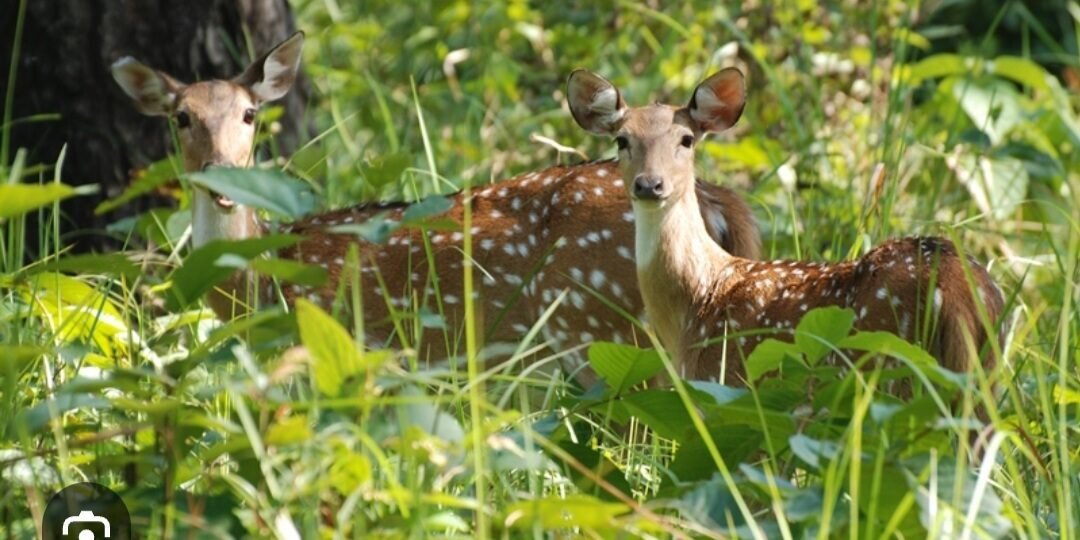Nepal’s beauty is truly unparalleled. However, there is much more to this small Asian country than just the rugged Himalayan mountain range. In the lowlands, there are lush jungles, incredible opportunities for wildlife viewing, and a diverse range of flora and fauna. Thanks to conservation efforts in recent decades, the Nepalese landscape has remained largely untouched by human activity, allowing wildlife populations to thrive. As a result, the population of Royal Bengal tigers has increased by over 60% in the past ten years. Additionally, Nepal has made its mark in history by becoming a sanctuary for some of the last remaining populations of the one-horned rhino.
The Nepalese people hold a deep spiritual connection to the mountain ranges and lakes that adorn their land. These natural wonders are steeped in fables and legends, and play a central role in the local culture. Many tribes and villages are nestled within the boundaries of Nepal’s national parks, and the locals are always eager to share their collective history with visitors. Nepal’s national parks are a shining example of successful local coordination, animal and plant preservation, and breathtaking natural beauty that is unmatched anywhere else in the world.
1- Sagarmatha National Park
Most mountain ranges and lakes in the vicinity are associated with legends and myths by the local population, as the landscape holds great spiritual importance for them. Numerous tribes and villages are situated within the park boundaries, and the local people are often eager to share their collective history with visitors. Sagarmatha, without a doubt, is an extraordinary place. This protected area is renowned for being home to the world’s tallest peak, Mount Everest. Alongside this colossal mountain, the rugged terrain of the Himalayas is inhabited by iconic animals such as the snow leopard, lynx, bears, hares, and the Himalayan thar. The surrounding region of the park lacks any roads, further enhancing its remote and unspoiled beauty. It is widely recognized for its spiritual significance. Many Sherpas reside in this area, while others embark on pilgrimages to various sites within the park.
The significance of Mount Everest to the local community cannot be overstated. Known as Chomolungma, or the Mother Goddess of the World, the mountain is believed to be inhabited by spirits. Whether one visits the park for this spiritual connection or for other reasons, it is undeniable that this park boasts remarkable features.
2-Chitawan National Park
The animal viewing opportunities are not the only draw to this park, as its surreal backdrop is equally captivating. This vast expanse boasts high mountain passes, expansive savannah plains, dense jungle settings, and free-flowing rivers and lakes. The park is home to one of the world’s last remaining populations of one-horned rhinos, as well as royal Bengal tigers, Gharial crocodiles, sloth bears, and the occasional leopard, providing ample viewing opportunities. Additionally, the park is a thriving habitat for bird species and unique flora and fauna. Thanks to the past three decades of intense anti-poaching and conservation efforts by activist groups and government intervention, animal populations are on the rise. Often compared to the Serengeti for its wildlife viewing, this park truly lives up to its reputation.
3- Langtang National Park
Located in the Himalayan mountain range, Langtang is incredibly stunning. It boasts a diverse range of biodiversity, cultural heritage, and climatic zones. Many individuals even visit Langtang to witness the mesmerizing starry night skies, which are showcased every evening. The terrain of Langtang is situated at a high altitude, resulting in the presence of alpine mountain ranges and pristine lakes. Unfortunately, in 2015, Langtang village was completely devastated by a massive avalanche, and over 100 bodies remain unrecovered. Throughout the park, there are numerous spiritual sites scattered. While sightings of the Yeti are common, confirmed animal species include black bears, monkeys, and the red panda.
4- Bardiya National Park
The park in Nepal is a dynamic and unspoiled area, covered with dense forest, grasslands, and riverine forest. Several rivers flow through the park, adorned with beautiful waterlilies and lotus flowers. The park is home to a variety of wildlife, including the one-horned rhino, elephants, tigers, deer, and the elusive gigantic dolphin. Visitors can also enjoy the sight of over 400 bird species, including brightly colored peacocks. Despite being largely unpopulated, the park is still home to the Tharu tribe, one of Nepal’s indigenous people.
5-Shivapuri National Park
Located in close proximity to Katmandu, this park has become a preferred destination for both locals and tourists seeking a break from the city’s hustle and bustle. The park boasts breathtaking natural beauty, allowing visitors to truly reconnect with nature. There are numerous established hiking trails that lead to fresh springs, verdant hills, mountain vistas, and lush forests. The park’s name is derived from religious texts and Lord Shiva. In addition to its scenic beauty, the park is also home to a variety of medicinal plants, over 100 types of mushrooms, more than 2,000 floral species, and 16 endemic plants. The park is also home to a diverse range of wildlife, including leopards, monkeys, and black bears, making it a must-visit destination for nature enthusiasts.
6-Shephoksundo National Park
The country’s largest national park is the breathtaking Shey Phoksundo National Park, encompassing the unparalleled beauty of Phoksundo Lake. This mesmerizing lake, with its captivating blue-green hue, holds the distinction of being Nepal’s deepest lake, situated at an elevation exceeding 3,000 meters.
Around the lake, various impressive wildlife such as blue sheep, snow leopards, Tibetan yaks, musk deer, and others reside. The park is renowned for trekking, similar to other national parks in Nepal, but distinguishes itself with its breathtaking views of Phoksundo Lake. Within the park boundaries, there are villages inhabited by over 9,000 people, most of whom follow Bon Buddhism, an ancient religion closely associated with Buddhism and Animism. Consequently, numerous religious sites are scattered throughout the park. Fortunate visitors may even catch a glimpse of the Paralasa Nepalaica, the highest flying butterfly in the world, as the park offers an ideal climate for its existence.
7-Makalu Barun National Park
The Makalu Barun National Park is a remarkable wonder of nature, situated in a remote location. The park’s mountainous skyline, which is home to some of the world’s largest mountains, dwarfs visitors. Mount Makalu, the fifth highest mountain in the world, stands tall at 8,463 meters or 27,838 feet. Additionally, many of its neighboring mountains impressively reach over 7,000 meters above sea level. The park is also home to an astonishing number of flora and fauna, including over 40 types of orchids and other rare plant life. It is the only protected region in the world to have an elevation gain of 8000 meters above sea level and is home to rare animals such as the elusive snow leopard, the endangered red panda, deer species, and Himalayan black bear.
8-Khaptad National Park
Khaptad exemplifies the remarkable Far-West region of Nepal, captivating the senses and nurturing both the body and mind. This park derives its name from Khaptad Baba, who migrated to the area in the 1940s to engage in meditation. His ashram, a site of pilgrimage for numerous individuals annually, holds significant spiritual value. Visitors of all backgrounds are cordially invited to explore this sanctuary; however, the consumption of alcohol, smoking, and the slaughter of animals are strictly forbidden. Additionally, other spiritual destinations within the park’s boundaries include Saileswari, a historical town adorned with various Hindu temples, Ramaroshan, which is intricately linked to the scriptures of Goddess Parvati, as well as Badimalika and Surma Sarovar, both of which bear historical significance and are associated with important Hindu scriptures. The landscape of Khaptad is a natural marvel, characterized by lush, undulating hills and breathtaking vistas of the Himalayan mountain range. Moreover, the summer climate offers exceptional comfort, with temperatures rarely dropping below 0 or exceeding 20 degrees Celsius.
9-Shuklaphanta National Park
Shuklaphanta, initially utilized as hunting grounds by the ruling class in Nepal, underwent a transformation in the 90s and became a wildlife reserve. In 2017, it achieved national park status on World Wildlife Day. The park’s main attractions include the presence of swamp deer and large herds of elephants. Additionally, fortunate visitors may have the opportunity to spot tigers and rhinos. A recent tiger census revealed that approximately 17 tigers currently reside within the park’s boundaries. The park’s diverse landscape, consisting of grasslands, forests, riverbeds, and tropical wetlands, provides a habitat for a wide range of flora and fauna. Furthermore, Shuklaphanta has gained recognition as a haven for birdwatchers. With over 400 bird species documented within the park, it is considered a paradise for bird enthusiasts. Notably, the largest population of Bengal Floricans in Negal can be found here, along with various species of eagles, owls, woodpeckers, vultures, and the magnificent painted stork.
10- Banke National Park
This remarkable pint-size national park was designated as part of the national parks system to safeguard endangered species in the region. As a result of their dedicated conservation endeavors, the tiger populations within its boundaries have experienced a twofold increase. In addition to the endangered Asiatic elephant and four-horned antelope, a diverse array of over 300 bird species and numerous reptile and fish species freely roam this area. The locals have long referred to the land on which Banke National Park resides as the “gift of the earth,” and many of them maintain traditional ways of life within its confines. The landscape of this park is composed of eight distinct ecosystems, including forests, grasslands, and mountain ranges. It is connected to various wildlife sanctuaries. To the west lies Bardia National Park, which is linked to the Katarniaghat Wildlife Sanctuary in India, as well as the Suhelwa Wildlife Sanctuary. This national park stands as Nepal’s most recent addition to its protected areas and serves as a testament to the country’s ongoing commitment to conservation.



